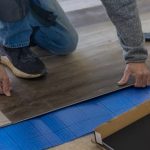In today’s digital age, home theatre systems have become an essential part of many households. While a large, high-definition screen may be the centerpiece of your entertainment setup, it is the audio quality that truly brings movies, music, and games to life in your living room.
From hearing the subtle details in a movie soundtrack to feeling the rumble of an explosion in a video game, high-quality sound can make all the difference in creating an immersive and captivating experience.
When it comes to improving home theatre sound, there are several factors to consider. Understanding the basics of sound systems and terminology is crucial for selecting the right components and optimizing their performance. Additionally, proper speaker placement and room acoustics play a significant role in maximizing sound quality. Furthermore, utilizing streaming services and high-resolution audio can enhance audio quality even further.
This comprehensive guide will take you through various aspects of improving home theatre sound. From selecting the perfect audio receiver to troubleshooting common audio issues, you’ll learn valuable tips and techniques that will help you create an immersive audio experience right in your own living room. So let’s dive in and unlock the full potential of your home theatre system.
Understanding the Basics
Introduction to Sound Systems
When it comes to improving home theatre sound, one must first have a good understanding of sound systems and the terminology associated with them. A sound system is composed of several components that work together to produce high-quality audio. These components include an audio receiver, speakers, subwoofers, and various cables.
At the core of a sound system is the audio receiver, which acts as the brain of the setup. It receives signals from different sources such as media players or streaming devices and distributes them to the speakers. The receiver also decodes surround sound formats like Dolby Atmos or DTS:X, enhancing the immersive experience.
Terminology Demystified
To fully comprehend sound systems, it is essential to familiarize yourself with common terminology used in the field. Here are some key terms:
- Frequency Response: This refers to the range of frequencies that a speaker can reproduce accurately. A wider frequency response ensures more detailed and balanced audio.
- Impedance: Impedance measures how much resistance a speaker presents to an amplifier’s output. It is typically measured in ohms (Ω). Matching the impedance of your speakers with that of your amplifier or receiver ensures optimal performance.
- Wattage: Wattage denotes how powerful an amplifier or speaker is and determines its maximum volume capabilities. Higher wattage generally leads to louder audio but does not necessarily guarantee better sound quality.
- Channel Configuration: Channel configuration indicates how many speakers are involved in delivering surround sound. Examples include 5.1 (five speakers and one subwoofer) and 7.1 (seven speakers and one subwoofer).
By understanding these basic terms, you will be better equipped to navigate through specifications and select suitable equipment for your home theatre setup.
Exploring Speaker Types
When it comes to selecting speakers for your home theatre, it is important to consider the different types available. Each speaker type serves a specific purpose and contributes to the overall audio experience.
- Front Speakers: These speakers deliver the majority of the sound in a home theatre system. They are responsible for dialogue, music, and most of the on-screen action. Front speakers can be further divided into floor-standing speakers, bookshelf speakers, or soundbars.
- Surround Speakers: Surround speakers are placed around the room and provide ambient sounds for a more immersive experience. They help create a sense of depth and dimensionality in the audio.
- Center Speaker: The center speaker acts as an anchor for dialogue and on-screen action. It should ideally be placed above or below the TV screen to ensure clear and focused audio.
- Subwoofers: Subwoofers handle low-frequency sounds or bass notes in a home theatre setup. They add depth and impact to explosions, rumbling engines, or musical scores with deep bass elements.
By understanding these different speaker types, you can choose a configuration that best suits your space and personal preferences. It is also important to ensure that all speakers work together harmoniously for optimal surround sound performance in your home theatre system.
Selecting the Perfect Audio Receiver
When it comes to improving the sound quality of your home theatre, selecting the perfect audio receiver is a crucial step. An audio receiver serves as the central hub for all your audio equipment, allowing you to control and amplify your sound. With so many options available on the market, it’s important to consider several key factors before making a decision.
One of the first factors to consider is the number of channels you need. Channels refer to the number of speakers that can be connected to the receiver.
The most common options are 5.1 and 7.1 surround sound systems, which include five or seven speakers respectively and one subwoofer. However, if you want an even more immersive experience, you may opt for a receiver that supports Dolby Atmos technology, which can accommodate additional overhead speakers for a three-dimensional sound experience.
Another factor to consider is power output. Power output determines how loud and clear your audio will be. It is measured in watts per channel (WPC), with a higher WPC indicating more power and potentially better sound quality. However, it’s important not to solely rely on wattage ratings when comparing receivers, as other factors such as impedance matching and quality of components also play a significant role in sound performance.
Connectivity options are also important considerations when selecting an audio receiver. Make sure that the receiver has enough HDMI inputs and outputs to accommodate all your devices such as gaming consoles, Blu-ray players, and streaming devices. Additionally, look for receivers that support modern connectivity standards like HDMI 2.1 or eARC (enhanced Audio Return Channel) for compatibility with high-resolution audio formats.
Considering these key factors will help you narrow down your options and choose an audio receiver that perfectly suits your needs and preferences. Remember that finding the perfect balance between features, performance, and price is essential in achieving high-quality sound in your home theatre.
| Factors to Consider | Explanation |
|---|---|
| Number of Channels | Determines the number of speakers that can be connected to the receiver, such as a 5.1 or 7.1 surround sound system. |
| Power Output | Measured in watts per channel (WPC), it determines the loudness and clarity of your audio. |
| Connectivity Options | The receiver should have enough HDMI inputs/outputs and support modern connectivity standards like HDMI 2.1 or eARC. |
Optimizing Speaker Placement
When it comes to creating the perfect home theater experience, one of the most important factors to consider is speaker placement. How and where you position your speakers can significantly impact the sound quality and overall immersion of your setup. In this section, we will delve into the key principles and techniques for optimizing speaker placement to achieve that desired “sweet spot” for surround sound.
The Importance of Proper Speaker Placement
Proper speaker placement is crucial for achieving an immersive surround sound experience. When speakers are placed correctly, they work together harmoniously to create a three-dimensional soundstage that enhances the sense of depth and realism in movies, music, and gaming. On the other hand, improper speaker placement can result in uneven or muddled sound, detracting from the overall audio experience.
Finding the Ideal Locations
The ideal locations for your home theater speakers depend on several factors, including room size and shape, seating arrangement, and personal preferences. However, there are some general guidelines that can help you find a good starting point for speaker placement.
For a traditional 5.1 surround sound setup (featuring five main speakers and a subwoofer), consider placing the center channel speaker either directly above or below your TV screen at ear level. The left and right front speakers should be positioned at equal distances from the center channel speaker and angled towards the audience. The left and right surround speakers should be placed slightly behind and above or to the side of your seating area.
The positioning of the subwoofer is also critical for achieving balanced bass response. Experiment with different subwoofer placements around your room to find a location that provides deep, impactful bass without overpowering or muddying other frequencies.
Tweaking and Fine-Tuning
After initial placement, it’s essential to fine-tune your speakers to optimize the listening experience. Take advantage of your receiver’s built-in room correction features or utilize a separate calibration microphone to measure and adjust the speaker levels, distances, and EQ settings. This will help compensate for any acoustic anomalies in your room and ensure that each speaker is outputting sound at the appropriate volume and frequency response.
Additionally, consider using speaker isolation pads or stands to minimize vibrations and improve clarity. Experiment with different angles, tilts, and distances from walls to achieve the best soundstage for your specific setup.
By carefully considering the principles of proper speaker placement, you can maximize the performance of your home theater system and create an immersive audio experience that rivals that of a commercial cinema. With attention to detail and some experimentation, you can find that sweet spot where every seat in your home theater becomes the best seat in the house.
Room Acoustics
The sound quality in a home theatre is greatly influenced by the acoustics of the room. Even with the best audio equipment, poor room acoustics can result in subpar sound performance. It is important to understand and implement simple techniques to enhance the sound quality in your home theatre.
Assessing the Room
Before making any modifications or enhancements, it is crucial to assess the current state of your room’s acoustics. Walk around your home theatre and listen for any echoes or reverberations that may be present. Pay attention to areas where sound may be bouncing off of hard surfaces, such as walls, floors, and ceilings. Identifying these problem areas will help you in implementing appropriate solutions.
Wall Treatments
One effective technique for improving room acoustics is by using wall treatments. Adding acoustic panels or sound-absorbing materials to the walls can significantly reduce echoes and reverberations in your home theatre space. These panels come in different designs, sizes, and thicknesses, allowing you to choose what suits your aesthetic preferences while enhancing acoustic performance.
Flooring Solutions
The type of flooring in your home theatre can also have an impact on sound quality. Hard surfaces like tile or hardwood flooring tend to reflect sound waves, resulting in a less desirable listening experience. Consider using carpeting or adding area rugs to help absorb excess sound and minimize echoes within the room.
Furniture Placement
Strategic furniture placement can play a significant role in optimizing room acoustics. Placing furniture items such as couches or bookshelves against reflective surfaces can help break up sound reflections and improve overall audio quality.
By implementing these simple techniques, you can enhance the sound quality in your home theatre space without having to invest in expensive audio equipment upgrades. Improving room acoustics will provide a more immersive audio experience, allowing you to fully enjoy your favorite movies, music, and games.
Understanding Equalization
Equalization, often referred to as EQ, is a crucial aspect of optimizing sound quality in a home theatre system. It allows you to fine-tune the frequency response of your speakers and compensate for any unwanted acoustic characteristics in your room. By understanding equalization and how to effectively use it, you can unleash the full potential of your speakers and enhance your audio experience.
One important aspect of equalization is understanding frequency bands. Each frequency band represents a range of frequencies in the audio spectrum. Commonly used frequency bands include bass (low frequencies), midrange (middle frequencies), and treble (high frequencies). By adjusting the level of each frequency band, you can balance the tonal quality and eliminate any peaks or dips in the sound.
There are several ways to apply equalization in a home theatre system. One option is using an external equalizer, which allows for more precise control over the sound. Another option is using the built-in equalizer feature available on some AV receivers or amplifiers. These built-in equalizers often come with preset sound modes for different types of media such as movies, music, and gaming.
When applying equalization, it’s important to listen carefully and make adjustments based on your personal preferences and room acoustics. Taking into account factors such as speaker placement, room size, and furniture arrangement can help you determine the ideal EQ settings for your home theatre system.
Tips for Effective Equalization
- Start by setting all EQ sliders or controls to their default or neutral positions.
- Experiment with different EQ settings by boosting or cutting specific frequencies to find what sounds best to your ears.
- Avoid excessive boosting or cutting as it may introduce distortion or unnatural sound artifacts.
- Consider using room correction software or automatic calibration systems for more precise equalization.
- Regularly evaluate and adjust your EQ settings as you make changes to your audio system or room setup.
By understanding and effectively utilizing equalization, you can optimize the sound quality of your home theatre system and enjoy a more immersive and satisfying audio experience.
Choosing the Right Speaker Setup
When it comes to creating a personalized sound experience in your home theatre, one of the key decisions you will need to make is choosing the right speaker setup. With so many options available, it can be overwhelming to determine which configuration is best suited for your needs and preferences. In this section, we will explore different speaker setups that can enhance your audio experience and allow you to immerse yourself in your favorite movies, music, or games.
One popular speaker setup option is a 5.1 surround sound system. This configuration consists of five main speakers and a subwoofer.
The main speakers usually consist of three front speakers (left, center, and right), which handle dialogue and other sound effects coming from the front of the screen, and two rear speakers (left surround and right surround), which recreate ambient sounds and add depth to the audio experience. The subwoofer is responsible for reproducing low-frequency sounds, providing deep bass for a more immersive feel.
Another option to consider is a 7.1 surround sound system. In addition to the components found in a 5.1 system, a 7.1 setup includes two extra rear speakers (rear left surround and rear right surround) for even more enveloping sound. This configuration can offer a more complete audio experience by enhancing directional cues and creating an even greater sense of depth.
For those seeking an even more immersive audio experience, there are also speaker setups such as Dolby Atmos or DTS:X that utilize overhead speakers or modules to create a three-dimensional soundstage. These systems can provide a truly cinematic experience by placing sound objects above you as well as around you.
When choosing the right speaker setup for your home theatre, it’s important to consider factors such as room size, seating arrangement, budget, and personal preferences. Each configuration offers its own advantages and considerations, so take the time to research and listen to different setups before making a decision.
Overall, selecting the right speaker setup can greatly enhance your audio experience and allow you to tailor the sound to your liking. Whether you opt for a traditional 5.1 or 7.1 system, or decide to explore more advanced technologies like Dolby Atmos, finding the perfect speaker setup will ensure that you can enjoy an immersive and personalized sound experience in your home theatre.
| Speaker Setup | Description |
|---|---|
| 5.1 Surround Sound | A configuration consisting of three front speakers, two rear speakers, and a subwoofer. |
| 7.1 Surround Sound | An enhanced version of the 5.1 setup with two additional rear speakers for a more immersive audio experience. |
| Dolby Atmos / DTS:X | A system that uses overhead speakers or modules to create a three-dimensional soundstage. |
Enhancing Sound with Soundproofing
Soundproofing is an important aspect of enhancing the sound quality in a home theater. By minimizing external noise and maximizing audio performance, soundproofing can significantly improve the overall experience for movie enthusiasts, gamers, and music lovers alike. In this section, we will explore some tips to effectively soundproof your home theater space.
One of the first steps in soundproofing your home theater is identifying and sealing any gaps or openings that may be allowing unwanted noise to enter the room. This includes windows, doors, vents, and any other potential entry points for sound. Using weatherstripping, door sweeps, acoustic caulk, or even heavy curtains can help minimize sound leakage and create a more isolated environment.
Another effective method of soundproofing is adding acoustic panels or foam to the walls of your home theater. These panels are designed to absorb sound waves and reduce echo in the room, resulting in improved audio clarity. Additionally, placing bookshelves filled with books or installing thick curtains can help absorb sound reflections and enhance the acoustics of your space.
It’s also important to consider the flooring in your home theater when it comes to soundproofing. The type of flooring you have can greatly impact how much noise is transmitted to other parts of the house or how much outside noise seeps into the room.
For instance, carpeting or rugs with a thick underpad can help absorb sound and prevent it from traveling through floors. On the other hand, hard surfaces like wood or tile may require additional measures such as using rubber underlayments or floor mats to reduce vibrations and impact noise.
By implementing these soundproofing techniques, you can create a dedicated space where you can fully immerse yourself in your favorite movies, games, or music without distractions from outside noises. Taking steps to minimize disturbance and maximize audio performance will ultimately lead to a more enjoyable and immersive experience in your home theater.
Calibrating Sound for Different Media
When setting up a home theatre system, it is crucial to calibrate the sound for different types of media, such as movies, music, and gaming. Each type of media has its own unique audio requirements and preferences, and by optimizing the settings and adjustments accordingly, you can fully immerse yourself in the audio experience.
One important aspect to consider when calibrating sound for different media is the audio format. For movies, most Blu-ray discs and streaming platforms support formats like Dolby Digital and DTS Surround Sound. These formats provide cinematic sound quality with immersive surround effects. Adjusting your audio receiver’s settings to match the specific format of the movie can greatly enhance your viewing experience.
For music enthusiasts, achieving optimal sound quality begins with selecting the appropriate audio mode on your receiver. Many receivers offer modes specifically designed for music playback, such as stereo or direct mode. These modes prioritize accurate reproduction of music by focusing on two-channel output without any additional audio processing effects.
Gaming requires a slightly different approach when it comes to sound calibration. Many modern video games utilize advanced 3D audio technologies like Dolby Atmos or DTS:X to create a more immersive gaming environment. By enabling these technologies on your audio receiver and configuring the speaker setup accordingly, you can enjoy precise positional audio cues that enhance gameplay.
In addition to adjusting sound formats and modes, it is essential to fine-tune other settings like speaker levels, equalization (EQ), and dynamic range compression (DRC) based on personal preferences. Experimenting with these settings can help find the perfect balance between clarity, realism, bass response, and overall impact.
| Type of Media | Recommended Audio Settings |
|---|---|
| Movies | Enable Dolby Digital or DTS Surround Sound. Adjust speaker levels and equalization for optimal cinematic experience. |
| Music | Select stereo or direct mode for accurate music reproduction. Fine-tune EQ settings to suit personal preferences. |
| Gaming | Enable Dolby Atmos or DTS:X for immersive gaming. Configure speaker setup and adjust EQ for precise positional audio cues. |
Calibrating sound for different media is an ongoing process that requires regular adjustments and fine-tuning. It is important to experiment with different settings and configurations to find the perfect audio balance that suits your individual preferences.
By calibrating the sound in your home theatre system for movies, music, and gaming, you can fully optimize your audio experience, creating a truly immersive environment that brings your favorite media to life.
Utilizing Streaming Services and High-Resolution Audio
With advancements in technology, streaming services and high-resolution audio have become increasingly popular options for enjoying content in a home theatre. Utilizing these services can greatly enhance the audio quality of your setup and provide access to premium content that takes your viewing experience to the next level.
One of the key advantages of streaming services is the ability to access a wide range of media content at the touch of a button. Services like Netflix, Amazon Prime Video, and Disney+ offer a vast library of movies, TV shows, and documentaries with high-quality audio tracks. This means you can enjoy immersive sound on par with what you would experience in a movie theater without leaving the comfort of your own home.
Additionally, many streaming services now offer high-resolution audio options for music. These platforms provide access to lossless or Hi-Res audio formats that deliver superior sound quality compared to standard compression formats like MP3. By choosing high-resolution audio streaming services such as Tidal or Qobuz, you can enjoy your favorite tunes with greater detail, clarity, and depth.
To fully utilize streaming services and high-resolution audio in your home theatre setup, make sure you have a reliable internet connection with sufficient bandwidth to handle the data streams without interruptions or buffering issues. Ideally, a wired connection via Ethernet is recommended over Wi-Fi for more stable performance. Additionally, consider investing in a media player or smart TV that supports these services natively or allows for easy installation of compatible apps.
Troubleshooting Common Audio Issues
Having a home theatre is a great way to enjoy movies, music, and gaming in the comfort of your own space. However, it can be frustrating when you encounter sound problems that disrupt your audio experience. In this section, we will explore some common audio issues that can occur in a home theatre and provide solutions on how to identify and fix them.
One common issue is poor sound quality or unclear dialogue. This can be caused by improper speaker placement or incorrect settings on your audio receiver. To troubleshoot this problem, start by checking the position of your speakers. Make sure they are placed at ear level and that they are not obstructed by any objects or furniture. Additionally, check the wiring connections to ensure they are secure.
Another potential issue is low bass response or lack of depth in the sound. This can be due to inadequate subwoofer placement or incorrect settings on your audio receiver. To address this problem, try repositioning the subwoofer in different areas of the room to find the optimal spot where it can deliver deep and impactful bass. Experiment with adjusting the crossover frequency setting on your receiver as well for better integration between the main speakers and subwoofer.
Sometimes, there may be a complete loss of sound coming from one or more speakers in your home theatre setup. This could indicate an issue with the wiring or connection to that particular speaker. Check all the wiring connections for loose connections or damage, and replace any faulty cables if necessary. Additionally, make sure that each speaker is properly connected to its corresponding channel on the audio receiver.
By identifying these common audio issues and applying the appropriate troubleshooting steps, you can improve sound problems in your home theatre setup and enjoy a more immersive audio experience. Remember to always refer to the user manuals for specific instructions related to your equipment and seek professional help if needed. With proper troubleshooting, you can resolve these issues and fully enjoy the high-quality sound in your home theatre.
Conclusion
In conclusion, by following the tips and techniques mentioned in this article, you can greatly enhance the sound quality of your home theatre and create an immersive audio experience. Understanding the basics of sound systems and terminology is essential to make informed decisions when selecting an audio receiver and speakers. Additionally, optimizing speaker placement and considering room acoustics can significantly improve sound distribution and clarity.
Equalization is an important tool to unleash the full potential of your speakers, allowing you to adjust frequencies and tailor the sound to your preference. Exploring different speaker setups also gives you the opportunity to personalize your sound experience based on your listening habits and preferences.
Soundproofing your home theatre can eliminate disturbances from outside noises and maximize audio performance. By minimizing unwanted sounds, you can fully immerse yourself in the audio experience without any distractions. Calibrating sound settings for different media types such as movies, music, and gaming ensures that you are getting the best possible audio quality for each type of content.
Finally, utilizing streaming services and high-resolution audio options offers access to premium content with superior sound quality. By taking advantage of these features, you can further enhance your home theatre’s audio performance.
By implementing these tips and tricks, troubleshooting common audio issues will become easier. You will have a better understanding of how to identify and fix any problems that may arise in your home theatre setup.
Overall, with improved sound quality in your home theatre system, you can truly enjoy an immersive audio experience right from the comfort of your own home. From enhanced clarity to deep bass rumble, every detail in movies, music, or video games will come alive with precision and depth. So go ahead – get started on improving the sound quality of your home theatre today.
Frequently Asked Questions
How can I make my sound system sound better?
There are several ways to make your sound system sound better. Firstly, consider the placement of your speakers. Position them appropriately around the room, taking into account factors like distance from walls and furniture that could interfere with the sound waves. Additionally, ensure that your speaker wires are properly connected and not damaged, as this can affect the quality of sound.
Another tip is to experiment with speaker positioning and angles to find the sweet spot for optimal sound projection. Furthermore, investing in high-quality speakers and amplifiers can greatly enhance the overall audio experience. Lastly, adjusting the equalizer settings on your audio source or receiver can help fine-tune the sound by boosting or reducing certain frequencies to match your personal preferences.
Why is my home theater sound so low?
If you find that your home theater sound is too low, there may be a few reasons behind it. Firstly, check if all necessary cables are properly connected and secure, including those between your audio source (such as a DVD player or streaming device) and receiver or amplifier. Loose connections can result in weakened signals and lower volume output.
Additionally, ensure that both the audio source and your home theater’s receiver or amplifier are set to an appropriate volume level – one might inadvertently be set too low. It’s also worth checking if any specific audio settings have been enabled on either the source device or within the home theater system itself that might be dampening the volume output.
What is the best sound level for home theater?
Determining the best sound level for a home theater involves finding a balance between enhancing immersion through captivating audio while still maintaining a comfortable listening experience. Ideally, you want to achieve a level that allows you to clearly hear dialogue without strain while also feeling immersed in dynamic movie scenes with impactful sound effects. It’s important not to go excessively loud as it can damage hearing and distort audio quality.
The recommended guideline is to aim for a peak volume of around 85 decibels (dB), which is similar to average conversation level but loud enough to create an engaging experience. However, personal preferences and factors like room size and shape can influence the optimal sound level, so it’s best to adjust accordingly and find the right balance that suits your taste and environment.

I’m thrilled to have you here as a part of the Remodeling Top community. This is where my journey as an architect and remodeling enthusiast intersects with your passion for transforming houses into dream homes.





